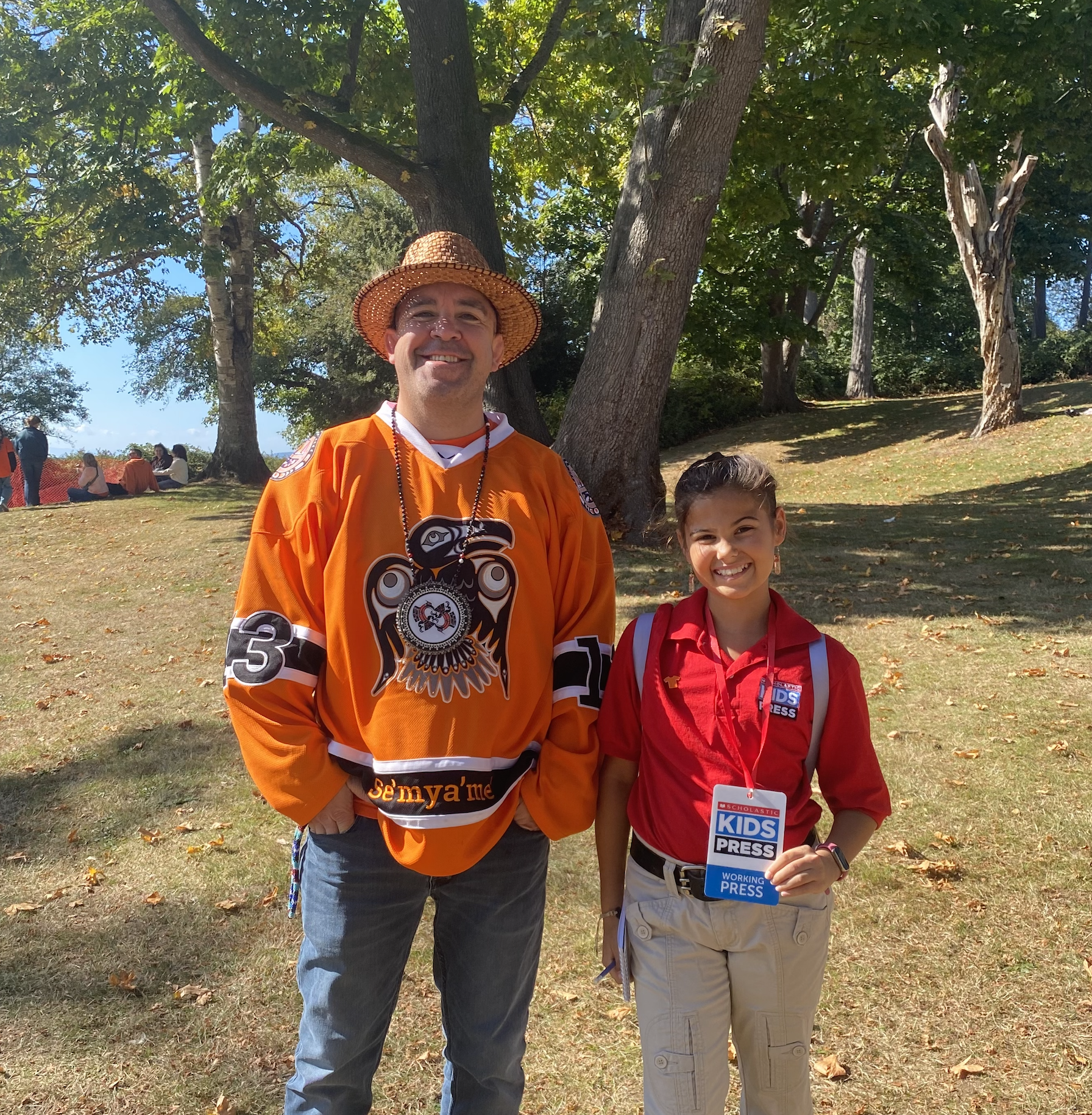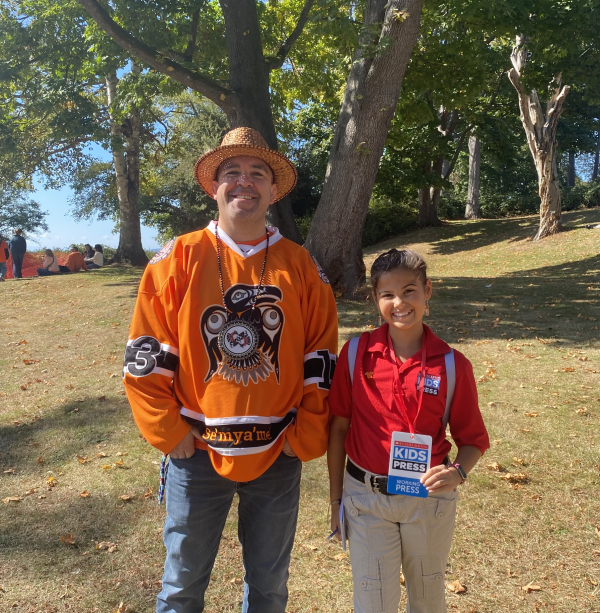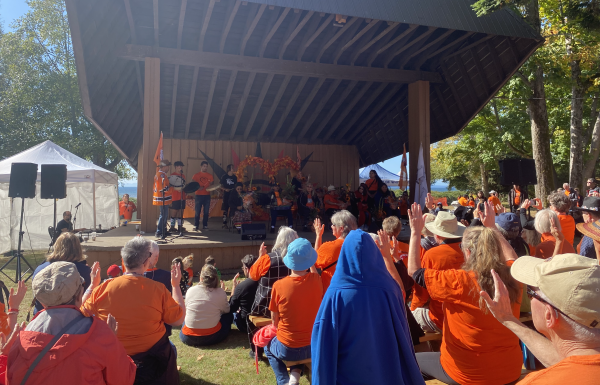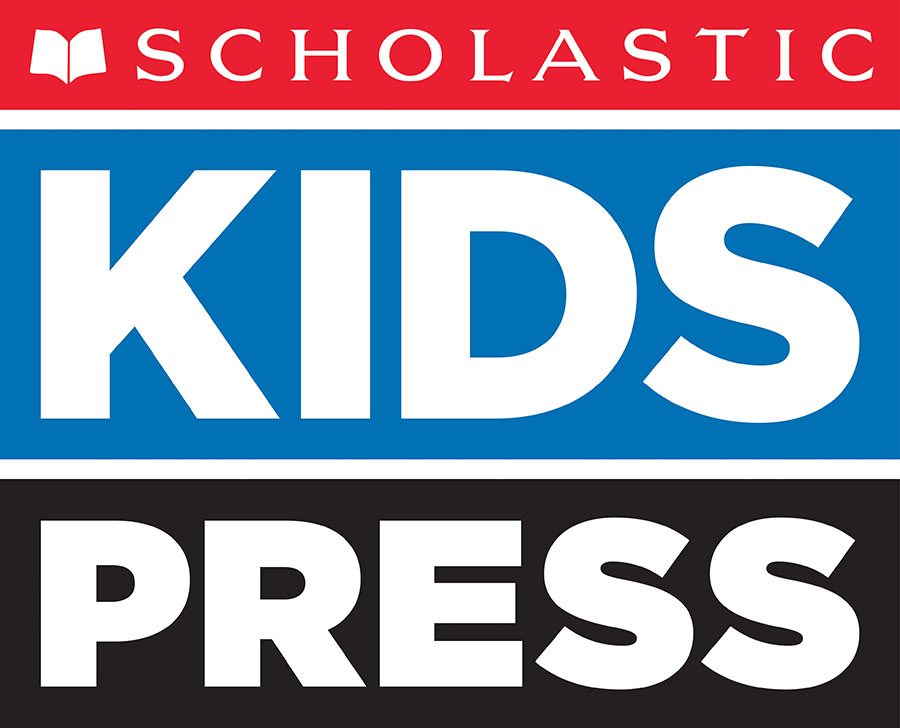KID REPORTERS’ NOTEBOOK
Canadian Holiday Honors the Indigenous Community





Jade at a National Day for Truth and Reconciliation event in Canada with Harley Chappell, Chief of the Semiahmoo First Nations
“When we have our elders on stage, like today, and they’re able to look out and see a lot of non-Indigenous communities come to them and share their love and appreciation for them to help them heal, that’s beautiful,” said Harley Chappell, Chief of the Semiahmoo First Nations.
I spoke with Chappell on September 30 at Semiahmoo Park in Surrey, a city in British Columbia, Canada. The Chief led the Semiahmoo First Nations’ third annual Walk for Truth and Reconciliation. An afternoon ceremony with about 200 attendees followed.
Similar events were held throughout Canada on September 30, which is a national holiday. The National Day for Truth and Reconciliation honors members of the Indigenous community who suffered systemic abuse and mistreatment at Canada’s residential schools. Such schools operated in Canada for more than 150 years, with the last one closing in 1996.
The schools aimed to strip Indigenous children of their culture and language. More than 150,000 children were taken from their families to live at these schools, where they were subjected to harsh treatment. In recent years, technological developments have led to the discovery of numerous unmarked graves near residential schools. Canadians had to reckon with the horrifying truth, while Indigenous communities had their worst fears confirmed.
 During the Semiahmoo ceremony in Surrey, survivors of residential schools were presented with flowers and surrounded by love.
During the Semiahmoo ceremony in Surrey, survivors of residential schools were presented with flowers and surrounded by love.
“RECONCILIATION IS A RELATIONSHIP”
The Indigenous community encourages Canadians to wear orange on September 30, which is also Orange Shirt Day. The gesture is meant to honor the survivors of the schools and those who didn’t make it home.
“For our elders and our communities that are still struggling with the impacts of residential schools and colonization, it’s an opportunity to heal and to see the support and love from the broader community,” Chappell explained.
Indigenous youth participated in the ceremony, including Chief Chappell’s own children. “We need to educate our children and give them the honest truth, regardless of how challenging that may be,” Chappell said. “We need to share with them the truth of what happened to our parents and grandparents and how our identities are lost and jumbled up.”
During the Semiahmoo ceremony, people in the crowd appeared emotional as residential school survivors were presented with flowers. Audience members were asked to raise their hands in support of the survivors.
Chappell hopes that the coming together of all Canadians to reckon with the past will lead to increased understanding. “Reconciliation is a relationship,” he said. “There’s not much trust, not much faith anymore. As we get to know each other, and we open those doorways to each other, it gets a little easier.”
